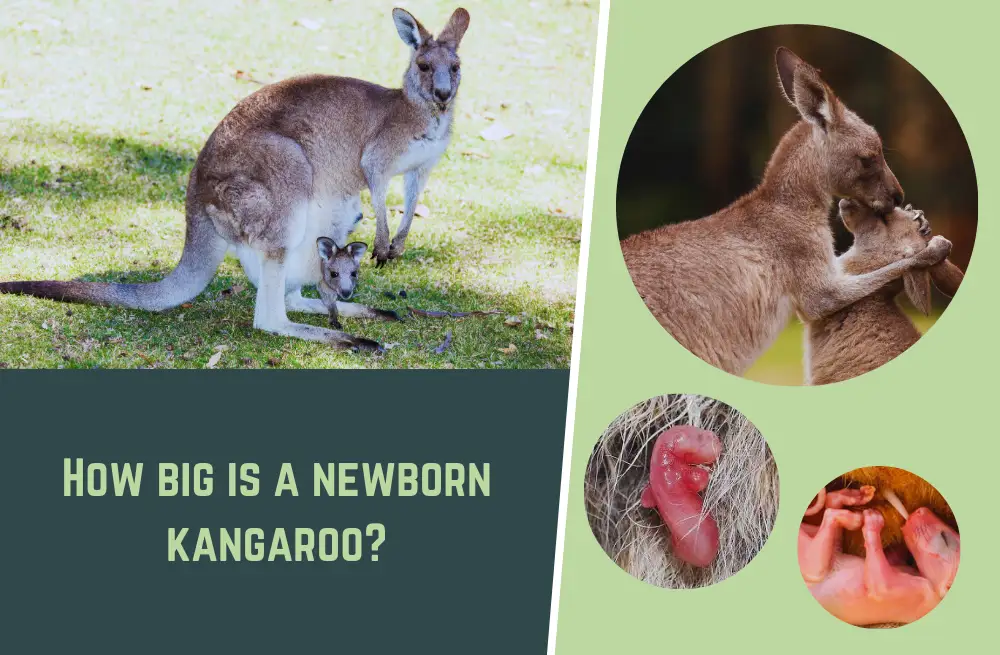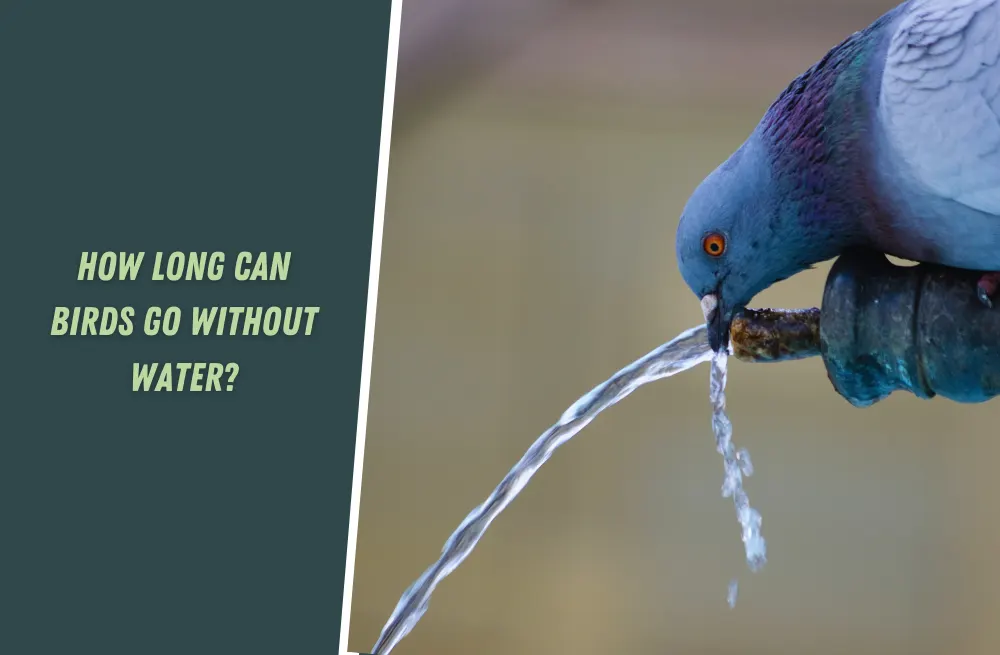Baby kangaroos, or joeys, have a unique and fascinating way of entering their mother’s pouch. In this article, we will explore the incredible process by which baby kangaroos find their way into the pouch, unraveling the mysteries of this remarkable journey.
So, let’s dive into the world of kangaroos and discover how these adorable creatures make their way into the safety and comfort of the pouch.
How do baby kangaroos find their mother’s pouch?
Baby kangaroos possess an incredible sense of smell that plays a crucial role in their journey to locate their mother’s pouch. Instinctively, they follow the enchanting scent trail left by their mother, like a fragrant compass guiding them towards the welcoming opening of the pouch.
Is it difficult for baby kangaroos to get into the pouch?
For tiny joeys, climbing into their mother’s pouch is not an easy feat. As they begin their journey, they use their forelimbs to gradually make their way up their mother’s belly towards the pouch. This requires coordination, strength, and perseverance.
Keep in mind that newborn joeys are incredibly small and underdeveloped, so the task may seem daunting.
However, their instincts and innate abilities drive them to overcome the challenge. With each small step and leap, they inch closer to the pouch, driven by their determination to find safety and nourishment inside their mother’s protective embrace. It’s a testament to the resilience and tenacity of these remarkable little creatures.
Do baby kangaroos need assistance to enter the pouch?
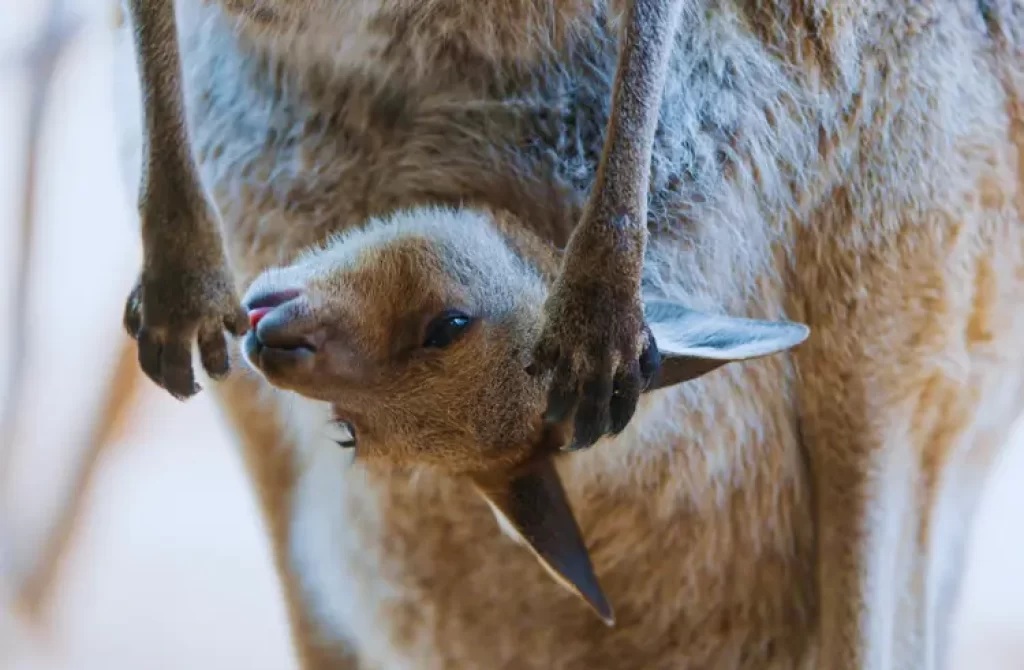
Baby kangaroos, known as joeys, are remarkably independent when it comes to entering their mother’s pouch. While they don’t receive direct assistance from their mother, they instinctively navigate their way into the pouch using their own abilities.
After birth, the tiny joey will crawl from the birth canal to the mother’s pouch, guided by their strong sense of smell and their natural instinct to seek warmth and safety. They use their forelimbs to climb up their mother’s belly, propelled by their determination and innate climbing skills.
The process may seem arduous for such small and underdeveloped creatures, but it is a crucial part of their early development. As they wriggle and wiggle their way towards the pouch, they strengthen their muscles, coordination, and perseverance.
Once inside the pouch, the joey will attach itself to one of the teats, where it will receive nourishment and continue its growth. The pouch provides a secure and nurturing environment for the joey, allowing it to develop further before eventually venturing out on its own.
While baby kangaroos don’t receive direct assistance, they are equipped with the instincts and abilities necessary to find their way into the pouch. It is a testament to their resilience and adaptability, showcasing the incredible bond between mother and joey in the world of kangaroos.
How does the kangaroo pouch accommodate the growing joey?
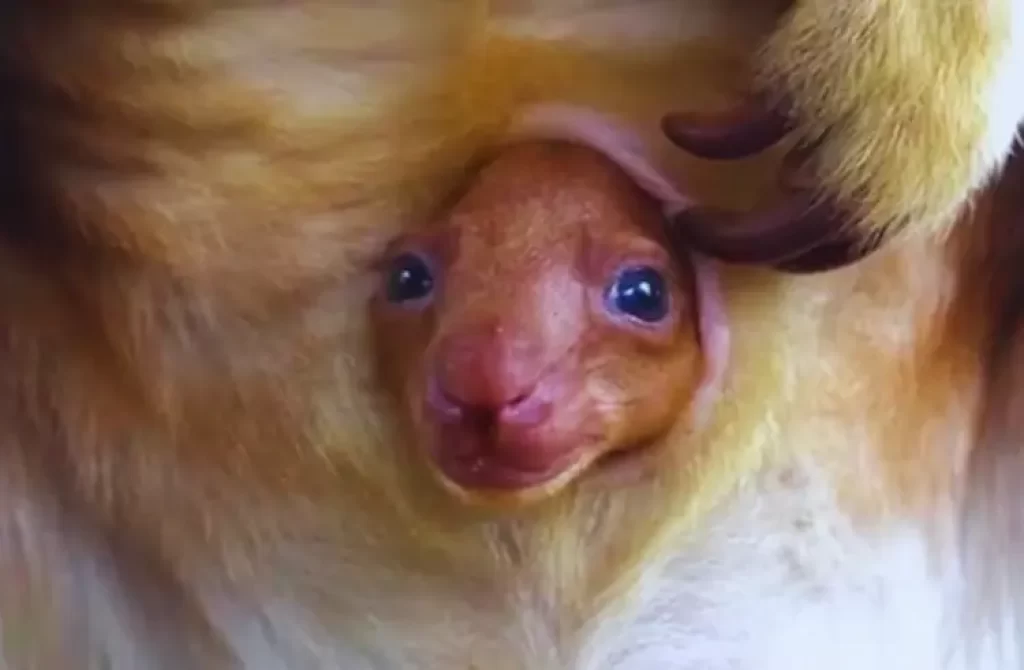
The kangaroo pouch is an extraordinary feature that adapts and expands to accommodate the growing joey. Initially, when the joey is born, the pouch is small and snug, providing a safe and nurturing environment for the newborn.
As the joey continues to develop, the pouch undergoes remarkable changes to accommodate its growth. The pouch is made of elastic and muscular tissue, allowing it to stretch and expand as needed. This flexibility ensures that the joey has enough space to move around, adjust its position, and nurse from its mother’s teats.
As the joey grows older and larger, the pouch continues to stretch, adapting to the joey’s increasing size. The walls of the pouch become more spacious and pliable, providing ample room for the joey to explore and develop its limbs.
The pouch also offers protection and insulation for the growing joey. Its unique design helps regulate temperature, keeping the joey warm during cooler weather and providing ventilation to prevent overheating in hotter climates.
The pouch serves as a vital part of the kangaroo’s reproductive system, offering a nurturing and protective environment for the joey until it is ready to venture out and explore the world on its own.
Does the kangaroo pouch accommodates more than one joey?
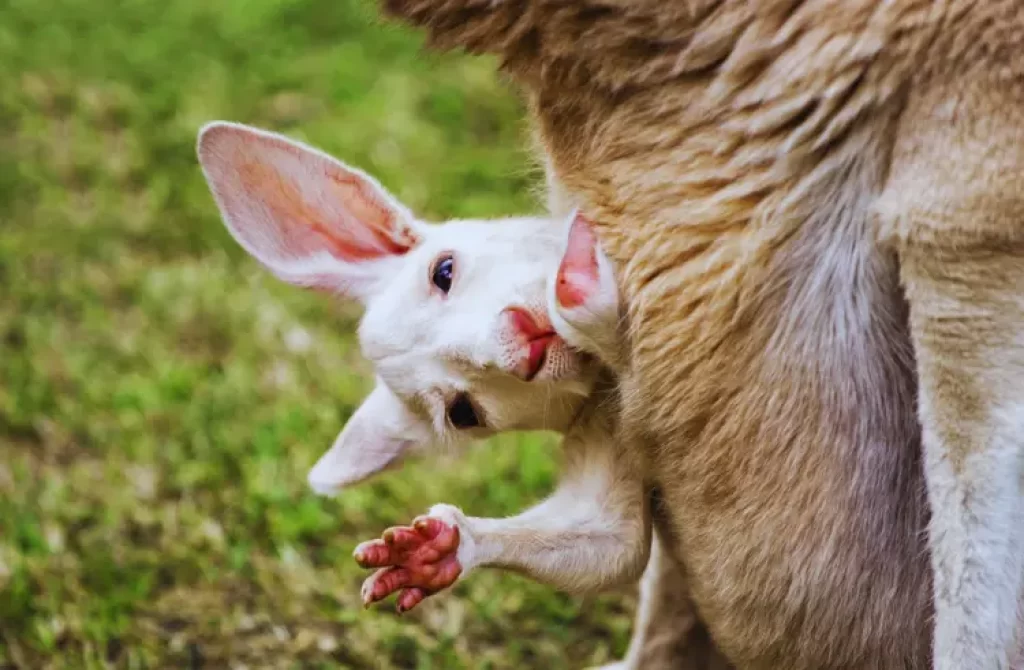
No, the kangaroo pouch typically accommodates only one joey at a time. Unlike some other marsupials, such as possums, kangaroos do not have a pouch with multiple compartments to carry multiple offspring simultaneously.
After giving birth, the mother kangaroo’s teat swells inside the pouch, providing nourishment to the joey. The joey attaches itself to one of the teats and remains inside the pouch for several months, until it becomes more independent and starts to venture out.
While it is uncommon, there have been rare instances of twin joeys occupying the pouch simultaneously. In these cases, each joey will attach to a different teat within the pouch. However, this is an exception rather than the norm, and most kangaroos give birth to a single joey at a time.
Once the joey grows and becomes too large for the pouch, it will start to spend more time outside, exploring the world and gradually becoming independent. As the joey continues to grow, it will eventually leave the pouch for good.
Overall, the kangaroo pouch is designed to accommodate and nurture a single joey at a time, ensuring that it receives the necessary care and protection from its mother until it is ready to face the world on its own.
Can baby kangaroos fall out of the pouch?
While it is uncommon, baby kangaroos can occasionally fall out of the pouch. The pouch is designed to secure and protect the joey, but there are instances where accidents can happen. Factors such as sudden movements, vigorous activities, or external disturbances may contribute to a joey falling out of the pouch.
However, mother kangaroos are highly attentive and protective of their young. They possess a strong maternal instinct and have developed ways to prevent such mishaps. When a joey falls out of the pouch, the mother quickly responds by retrieving the joey and returning it to the safety of the pouch.
The mother’s bond with her joey is strong, and she constantly checks on them, ensuring they are secure inside the pouch. In situations where a joey falls, the mother will use her forelimbs and nose to scoop up the joey and place it back into the pouch.
The pouch itself also acts as a safeguard against accidental falls. It has a natural curve and tight opening that helps keep the joey secure within its confines. Additionally, the joey instinctively clings onto the teats inside the pouch, providing an additional level of security.
Falling out of the pouch is relatively rare, and the mother kangaroo is usually vigilant in preventing such incidents. The pouch serves as a protective haven for the joey, allowing it to develop and grow in a secure environment until it is ready to venture out on its own.
Here’s a cute video that you might like
Related animals
Conclusion
The journey of a baby kangaroo into its mother’s pouch is a remarkable and awe-inspiring process. Through their incredible sense of smell and determination, these tiny creatures find their way into the pouch, where they will continue to grow and develop under the loving care of their mother.
The kangaroo pouch is a testament to the remarkable adaptations of these marsupials and the unique bond between mother and joey.
If you want to learn more about the captivating world of kangaroos, be sure to explore our other articles on our website. Get ready to hop into the fascinating world of these amazing creatures!

